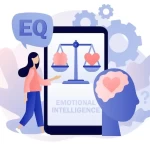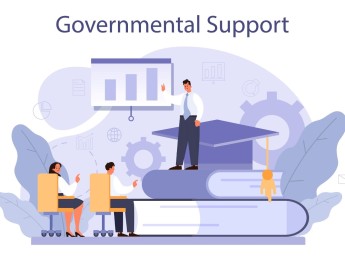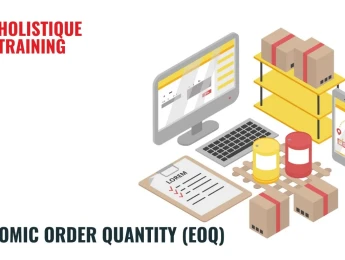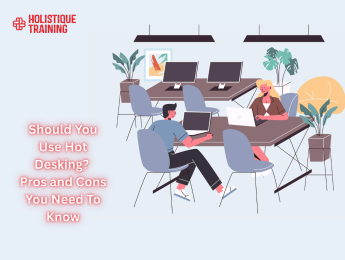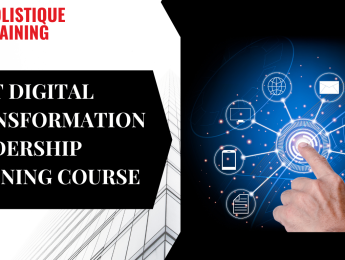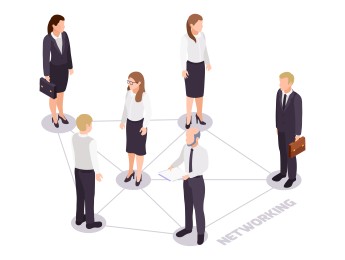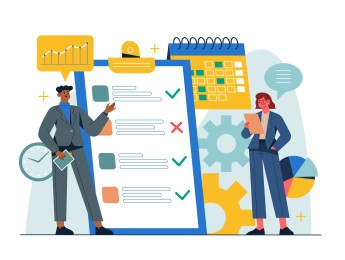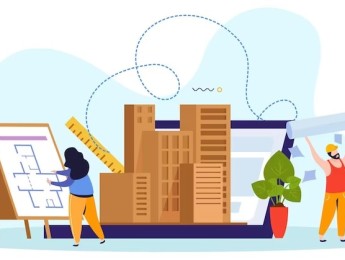- Table of Contents
- Introduction
- Problem-Solving Defined
- What Are Problem-Solving Skills?
- How to Improve Problem-Solving Skills
- 1. Define the Problem
- 2. Break it Down
- 3. Explore Multiple Perspectives
- 4. Engage in Creative Thinking
- 5. Utilise Structured Approaches
- 6. Enhance Analytical Skills
- 7. Seek Continuous Learning
- 8. Embrace Failure as Learning Opportunities
- How Can It Be Embodied in the Workplace?
- 1. Customer Satisfaction
- 2. Process Improvement
- 3. Conflict Resolution
- The Role of Emotional Intelligence
- Leadership Challenge: Team Disengagement
- The Neuroscience of Problem-Solving
- Problem-Solving in Everyday Life
- 1. Financial Planning
- 2. Health and Wellness
- 3. Home Improvement Projects
- The Future of Problem-Solving
- 1. Artificial Intelligence (AI) Collaboration
- 2. Remote and Distributed Problem-Solving
- 3. Ethical and Social Problem-Solving
- Conclusion
Introduction
In a world where challenges and obstacles are a constant presence, the ability to solve problems effectively has become a valuable skill. Whether it's addressing complex issues in the workplace or finding innovative solutions to personal dilemmas, problem-solving skills are essential for success. In this extensive guide, we will explore the concept of problem-solving, define problem-solving skills, delve into practical strategies for improving these skills, and provide real-life examples of problem-solving scenarios in the workplace. By the end of this article, you'll have a deep understanding of problem-solving and how to harness its power.
Problem-Solving Defined
At its core, problem-solving is the process of finding solutions to difficult or ambiguous situations. It involves identifying and understanding a problem, exploring potential solutions, and implementing the most suitable course of action. Effective problem-solving requires critical thinking, analytical reasoning, creativity, and the ability to evaluate alternatives.
What Are Problem-Solving Skills?
Problem-solving skills encompass a range of cognitive abilities and personal qualities that enable individuals to tackle challenges effectively. These skills involve both logical and creative thinking, allowing individuals to approach problems from different angles and devise innovative solutions. According to GBS, problem-solving skills are becoming even more important in the corporate world these days, with 36% of workplaces requiring it as a core skill.
Skill | Description |
Analytical Thinking | The ability to break down complex problems into smaller components, analyse data, and identify patterns or trends. |
Creativity | The capacity to think outside the box, generate new ideas, and explore unconventional solutions. |
Critical Thinking | The skill to objectively assess information, evaluate arguments, and make informed decisions. |
Decision-Making | The aptitude to weigh pros and cons, consider potential risks, and choose the most appropriate course of action. |
Adaptability | The ability to adjust strategies and approaches as new information arises or circumstances change. |
Collaboration | The competence to work effectively with others, leverage diverse perspectives, and seek input from teammates. |
Table 1: Key problem-solving skills
How to Improve Problem-Solving Skills
While some individuals may naturally possess strong problem-solving skills, it is a skill set that can be developed and enhanced over time. Effective problem-solving involves a combination of structured methodologies and creative thinking. Here are some strategies to improve problem-solving abilities, diving deeper into each:
1. Define the Problem
Identifying and defining the problem is often the first and most crucial step in effective problem-solving. To do this effectively, consider the following points:
- Clarity is Key: Make sure the problem statement is clear and concise. Ambiguity in the problem definition can lead to confusion and ineffective solutions.
- Root Cause Analysis: Look beyond surface-level issues to identify the problem's root causes. Understanding the underlying factors can help you develop more targeted solutions.
- Desired Outcomes: Clearly define what success looks like. What are the specific goals or outcomes you want to achieve by solving this problem? Having a clear vision of success will guide your problem-solving efforts.
- Constraints and Limitations: Recognise any constraints or limitations affecting your problem-solving process. This could include budget constraints, time limitations, or resource availability. Understanding these constraints from the outset can help you plan accordingly.
2. Break it Down
Once you have a well-defined problem, the next step is to break it down into smaller, more manageable parts. This approach allows for a systematic examination of each component, aiding in understanding the overall problem. Consider the following when breaking down the problem:
- Decompose Complex Issues: Complex problems can often be overwhelming. Breaking them down into smaller, interconnected sub-problems makes them more approachable.
- Identify Dependencies: Understand how different components of the problem are interconnected. Recognising dependencies can help you prioritise which parts to address first.
- Sequential or Parallel: Decide whether to address sub-problems sequentially or in parallel. Depending on the situation, one approach may be more efficient than the other.
- Prioritisation: Prioritise the sub-problems based on their impact and feasibility. Start with those that have the most significant influence on the overall problem.
3. Explore Multiple Perspectives
Effective problem-solving benefits from diverse viewpoints. Seeking input from colleagues, mentors, or subject matter experts can provide valuable insights. Here's how to encourage diverse perspectives:
- Open Communication: Foster an environment where team members feel comfortable sharing their thoughts and ideas. Encourage open dialogue and active listening.
- Cross-functional Collaboration: Involve individuals with different backgrounds and expertise. A multidisciplinary approach can lead to more comprehensive solutions.
- Brainstorming Sessions: Organise brainstorming sessions to generate a wide range of ideas. Ensure that no idea is dismissed outright; instead, collect all suggestions for later evaluation.
- Challenge Assumptions: Encourage team members to challenge assumptions and think critically about existing beliefs or practices. This can lead to breakthrough solutions.
4. Engage in Creative Thinking
Creativity is a powerful tool in problem-solving. It allows you to explore unconventional solutions and think beyond established norms. Here are techniques to foster creative thinking:
- Brainstorming: Brainstorming sessions are ideal for generating many ideas without immediate judgment. Encourage participants to think freely and avoid self-censorship.
- Mind Mapping: Create visual representations of the problem and its potential solutions. Mind maps help you see connections and possibilities more clearly.
- Role Reversal: Put yourself in someone else's shoes, whether it's a customer, competitor, or even a fictional character. How would they approach the problem? This shift in perspective can yield fresh insights.
- Analogies and Metaphors: Draw parallels between unrelated concepts or situations. Analogies can inspire new ideas by connecting the familiar with the unfamiliar.
5. Utilise Structured Approaches
Structured problem-solving methodologies provide a systematic and organised framework for tackling problems. Familiarise yourself with these approaches:
- PDCA (Plan-Do-Check-Act) Cycle: This continuous improvement cycle involves planning a change, implementing it, checking the results, and acting on the findings. It's a valuable tool for process improvement.
- SWOT (Strengths, Weaknesses, Opportunities, Threats) Analysis: SWOT analysis helps you assess your organisation's internal strengths and weaknesses and external opportunities and threats. It's handy for strategic planning.
- 5 Whys Technique: Rooted in the idea of getting to the core cause of a problem, the 5 Whys involves repeatedly asking "Why?" to uncover deeper issues. It's effective for identifying the root causes of complex problems.
- Fishbone Diagram (Ishikawa Diagram): This visual tool helps identify potential causes of a problem by categorising them into various factors, such as people, processes, equipment, and more.
- Decision Trees: Decision trees map potential decisions and their consequences. They are particularly useful for making complex decisions with multiple variables.
6. Enhance Analytical Skills
Analytical thinking is crucial for effective problem-solving. Here's how to strengthen your analytical skills:
- Data Interpretation: Practice analysing data sets to extract meaningful insights. This skill is essential for evidence-based decision-making.
- Root Cause Analysis: Develop the ability to trace problems back to their root causes. Tools like the 5 Whys can assist in this process.
- Critical Thinking Exercises: Engage in critical thinking exercises and puzzles to sharpen your ability to evaluate information objectively.
- Simulation and Modeling: Use computer-based simulations or mathematical models to analyse complex systems and predict outcomes.
- Quantitative Analysis: Depending on your field, become proficient in quantitative analysis techniques, such as statistical analysis or financial modelling.
7. Seek Continuous Learning
Problem-solving skills can always be refined through ongoing learning and development. Here's how to make continuous learning a part of your problem-solving journey:
- Professional Development: Attend workshops, seminars, and training sessions related to problem-solving in your field.
- Conferences: Participate in industry conferences to stay updated with the latest trends and best practices.
- Online Courses: Enrol in online courses or certifications focusing on problem-solving skills, data analysis, or critical thinking.
- Reading and Research: Stay informed by reading books, academic papers, and articles on subjects related to your area of interest or expertise.
- Mentorship: Seek mentorship from experienced problem solvers who can provide guidance and share their practical knowledge.
8. Embrace Failure as Learning Opportunities
Failure is an inherent part of problem-solving. Viewing failures or setbacks as opportunities for growth and learning is essential. Here's how to make the most of them:
- Post-Mortem Analysis: After a failed attempt to solve a problem, conduct a post-mortem analysis. Identify what went wrong, why it went wrong, and what can be done differently next time.
- Iterative Approach: Embrace an iterative problem-solving approach. It allows you to make incremental improvements based on feedback and results.
- Document Lessons Learned: Record lessons learned from past problem-solving experiences. Refer to this knowledge when faced with similar challenges in the future.
- Resilience: Develop emotional resilience to bounce back from failures with a positive attitude and a determination to try again.
By deepening your understanding of these problem-solving strategies and incorporating them into your daily life, you can cultivate your problem-solving skills to a high degree. Over time, these skills will become second nature, enabling you to tackle even the most complex challenges with confidence and creativity.
How Can It Be Embodied in the Workplace?
1. Customer Satisfaction
Imagine a company receiving multiple customer complaints about a product defect. The problem-solving process involves investigating the issue, identifying the root cause, implementing corrective actions, and ensuring customer satisfaction. This resolves the immediate problem and enhances the company's reputation for customer service.
2. Process Improvement
In an organisational context, problem-solving skills are crucial for process improvement. Consider an organisation aiming to streamline its production line to increase efficiency. Problem-solving skills come into play when analysing the existing process, identifying bottlenecks, brainstorming potential solutions, implementing changes, and monitoring the results. This leads to higher productivity and cost savings.
Scenario | Problem-Solving Process |
Customer Satisfaction | Investigation, Toot Cause Analysis, Corrective Actions |
Process Improvement | Current State Analysis, Identifying Ineffeciencies |
Conflict Resolution | Understanding Issues, Meditation, Resolution Strategies |
Budgetary Constraints | Budget Analysis, Coast-Saving Opportunities |
Table 2: Workplace problem-solving scenarios
3. Conflict Resolution
Workplace conflicts can be detrimental to productivity and team morale. Effective problem-solving involves understanding the underlying issues, facilitating open communication, mediating conflicts, and implementing strategies to foster a harmonious work environment. This resolves the conflict and creates a positive and collaborative workplace culture.
The Role of Emotional Intelligence
Emotional intelligence (EQ) plays a significant role in problem-solving. It involves recognising, understanding, and managing one's own emotions and the emotions of others. High EQ individuals tend to excel in problem-solving as they can navigate interpersonal dynamics, empathise with others' perspectives, and make decisions that consider emotional well-being.
To illustrate this point further, let's look at a workplace example:
Leadership Challenge: Team Disengagement
Suppose a team leader notices that their team members have become disengaged and unmotivated. Instead of simply imposing changes, the leader with strong problem-solving skills and high EQ would:
Identify the Problem: Recognise that team members' disengagement is a problem that needs addressing.
Break it Down: Analyse the situation by considering various factors, such as workload, communication, and personal issues, that might contribute to disengagement.
Explore Multiple Perspectives: Seek input from team members to understand their concerns and perspectives. This involves active listening and empathy.
Engage in Creative Thinking: Generate innovative solutions to re-engage the team, such as adjusting workloads, improving communication channels, or offering personal development opportunities.
Utilise Structured Approaches: Implement changes systematically, monitor progress, and adjust strategies as needed.
Enhance Analytical Skills: Continuously assess the impact of changes on team engagement through data analysis and feedback collection.
Seek Continuous Learning: Stay updated on leadership and team management best practices to adapt to evolving challenges.
Embrace Failure as Learning Opportunities: If some strategies fail, view them as opportunities to learn and refine future approaches.
By addressing the problem holistically and emotionally intelligently, the leader not only resolves the immediate issue of team disengagement but also fosters a positive work environment and strengthens team cohesion.
The Neuroscience of Problem-Solving
Have you ever wondered how your brain works when you're solving a complex problem? Understanding the neuroscience behind problem-solving can explain why some strategies are more effective than others.
One key brain region involved in problem-solving is the prefrontal cortex. This brain area is responsible for executive functions such as planning, decision-making, and goal-setting. When faced with a problem, the prefrontal cortex goes into action, working to analyse information, generate potential solutions, and evaluate their outcomes.
Additionally, problem-solving often engages the brain's hippocampus, which is crucial for memory and learning. This is why drawing from past experiences and knowledge is an essential part of finding solutions.
As you work through a problem, neurotransmitters like dopamine and serotonin play a role in motivation, focus, and mood regulation. Maintaining a positive and motivated mindset is essential for effective problem-solving.
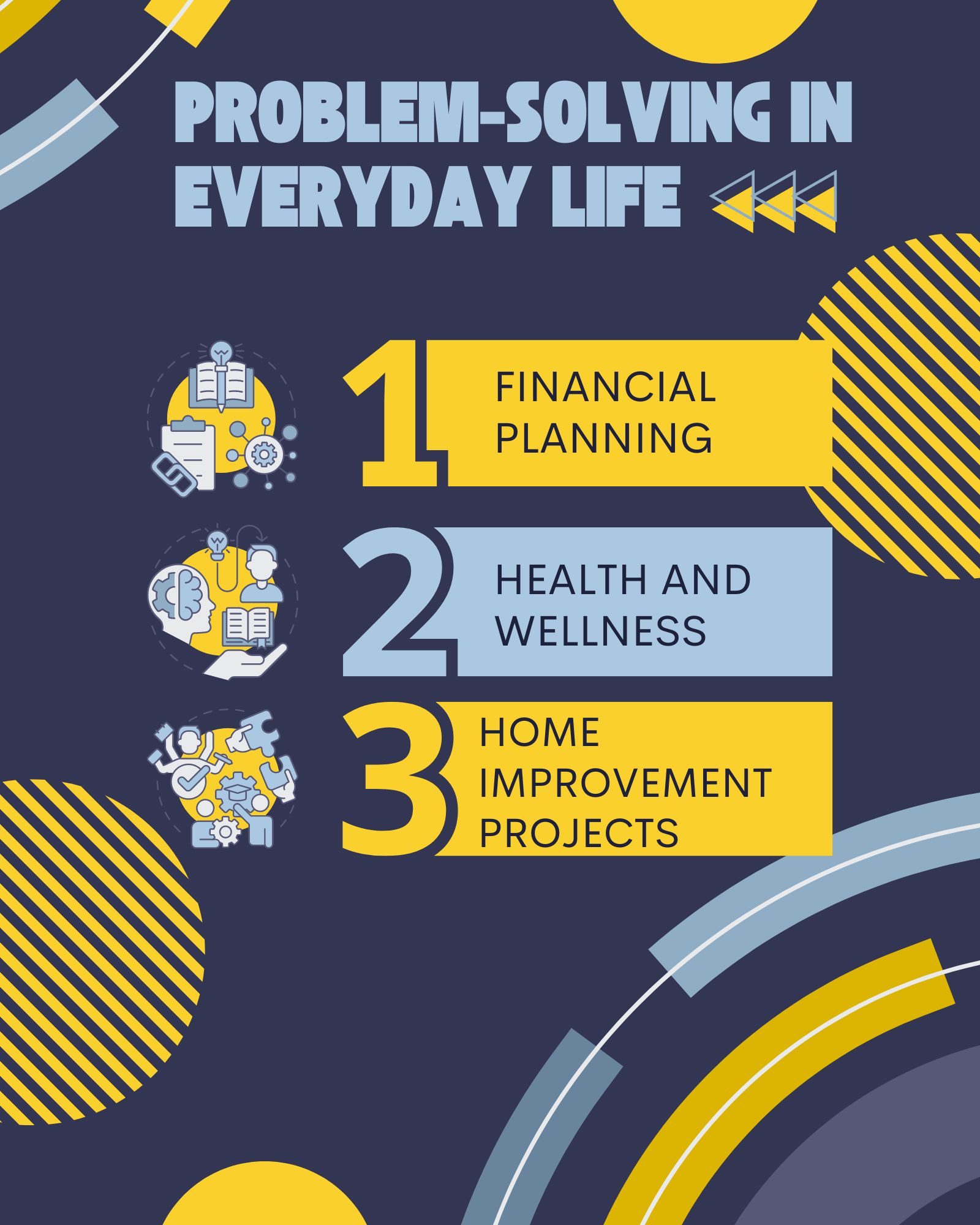
Problem-Solving in Everyday Life
Problem-solving is not limited to the workplace; it's a skill that has far-reaching implications for our daily lives. Here are three everyday scenarios where strong problem-solving skills can make a significant difference:
1. Financial Planning
Managing finances can be a complex challenge. Whether it's budgeting, investing, or planning for retirement, individuals with good problem-solving skills can make informed financial decisions. They analyse their financial goals, explore investment options, and adapt their strategies based on changing circumstances.
2. Health and Wellness
Maintaining good physical and mental health requires problem-solving. Individuals face health-related challenges like managing chronic conditions, making healthy lifestyle choices, and seeking appropriate medical care. Problem solvers research, consult experts, and tailor their health strategies to their specific needs.
3. Home Improvement Projects
From fixing a leaky faucet to renovating a room, home improvement projects demand effective problem-solving. Homeowners need to diagnose issues, plan repairs, and execute tasks. Those with problem-solving skills are more likely to complete projects successfully and avoid costly mistakes.
The Future of Problem-Solving
As technology continues to advance, problem-solving skills remain highly relevant. They become even more critical in navigating the complexities of our rapidly changing world. Here are some future trends that will shape the landscape of problem-solving:
1. Artificial Intelligence (AI) Collaboration
AI is becoming a valuable tool for problem-solving. Machine learning algorithms can analyse vast datasets, identify patterns, and generate insights. In the future, humans will collaborate with AI to tackle complex problems, combining the creativity of human thinking with the computational power of AI.
2. Remote and Distributed Problem-Solving
The rise of remote work and global collaboration means problem-solving often involves teams spread across different time zones and cultures. Effective communication and cross-cultural understanding will be essential skills for problem solvers.
3. Ethical and Social Problem-Solving
As society grapples with complex ethical and social issues, problem-solving skills will be crucial in finding solutions. From climate change to social justice, individuals who can navigate these complex problems with empathy and creativity will be in high demand.
Conclusion
Problem-solving skills are invaluable assets in both personal and professional contexts. By developing and honing these skills, individuals can become adept at navigating challenges and finding innovative solutions. Practices such as defining problems, embracing creative thinking, utilising structured approaches, and continuous learning can enhance one's problem-solving abilities.
Moreover, real-life scenarios in the workplace demonstrate the practical applications of problem-solving skills, highlighting their importance across various industries and job roles. By becoming proficient problem solvers, individuals can position themselves for success and contribute to the growth and development of their organisations. So, embrace problem-solving as a lifelong skill and unlock the door to a world of opportunities. Whether you're resolving workplace conflicts, optimising processes, or making impactful decisions, problem-solving is the key to a brighter future.





